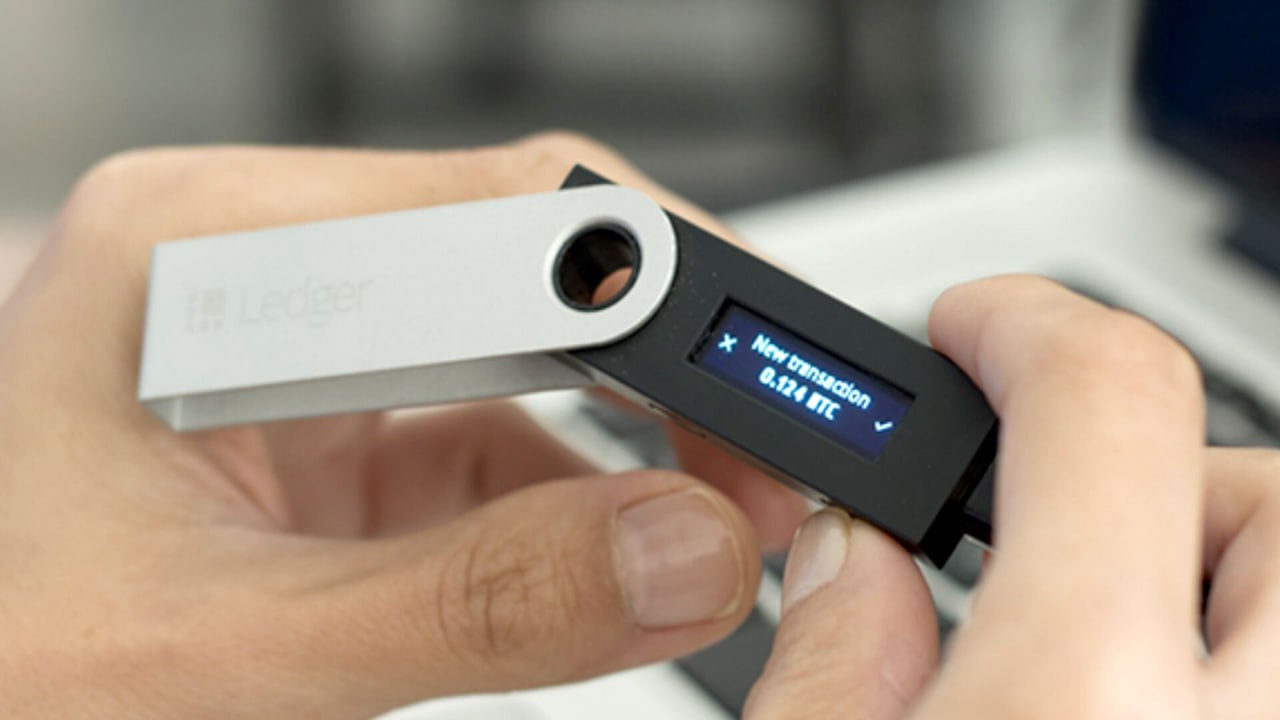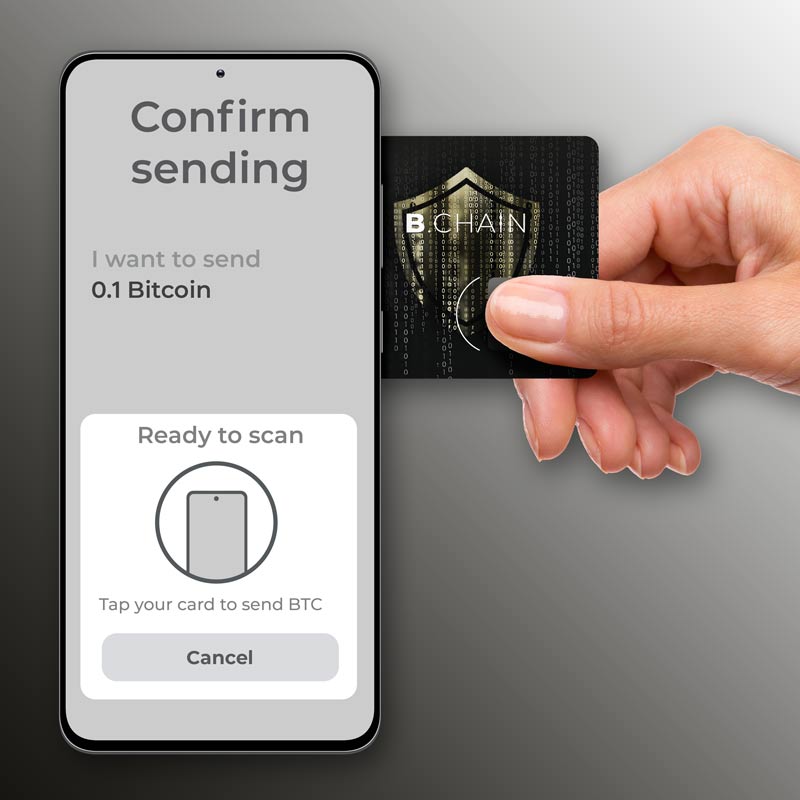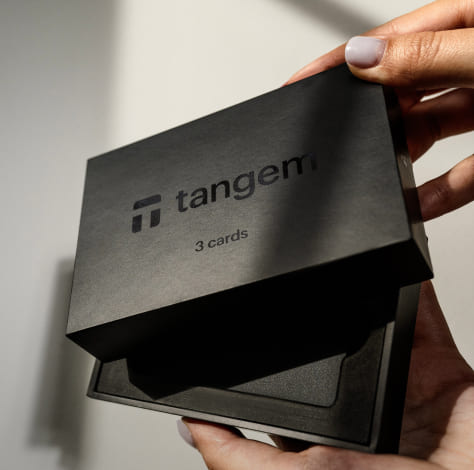
This head-to-head review helps you choose between Ledger, Trezor, and BitBox02 by evaluating security features, recovery options, ease of use, firmware transparency, and ecosystem support so you can confidently match your security needs to the right device.
The Contestants: A Closer Look at Each Wallet
You’re comparing three distinct approaches to securing private keys: Ledger’s hardware-backed ecosystem, Trezor’s open-source security-first design, and BitBox02’s minimalist, privacy-focused agility. Each brings a different blend of hardware architecture, software ecosystem, and usability priorities, so your decision will hinge on whether you favor broad asset support and an app-centric workflow, transparent open-source controls, or a lean device optimized for privacy and simplicity.
Across the three, you’ll find trade-offs between sealed secure elements and transparent firmware, Bluetooth convenience versus offline-only operation, and expansive third-party integrations versus tightly focused feature sets. Understanding how those choices map to your threat model and daily use will help you pick the wallet that best protects your assets while fitting your workflow.
Ledger: Heritage and Innovations
You’ll find Ledger centered on a hardware-first model with a focus on a certified secure element and a polished companion app, Ledger Live. The product line (Nano S Plus, Nano X) emphasizes broad coin support, regular firmware updates, and a large ecosystem of integrations that make managing many assets straightforward from your desktop or mobile device.
Ledger’s value proposition is scale and continuity: you get extensive token compatibility, vendor-backed security updates, and an experience tuned for users who want a single point of management for diverse portfolios. If you prioritize wide coin support and a mature ecosystem, Ledger’s long track record and device lineup make it an attractive choice.
TrezorSome of the links on this page are affiliate links. If you purchase a cold wallet through these links, we may earn a commission at no extra cost to you.: Security and User Experience
You’ll notice TrezorSome of the links on this page are affiliate links. If you purchase a cold wallet through these links, we may earn a commission at no extra cost to you. puts transparency and verifiability front and center, offering open-source firmware and a straightforward user interface that many find inviting. Model One and Model T expose clear recovery mechanisms, passphrase support, and easy integration with third-party wallets, so you can follow and audit the device behavior more directly than with closed-source alternatives.
Trezor’s design trades a sealed secure element for an auditable architecture, relying on software transparency and strong procedural controls to defend your keys. That approach gives you confidence through visibility; you can inspect firmware and follow the device’s processes rather than depending solely on vendor attestations.
For advanced users you’ll appreciate how Trezor supports complex workflows—passphrase-protected hidden wallets, deterministic seed backups, and deep integrations with tools like Electrum and Wasabi—making it suitable for privacy-focused setups and detailed coin control without sacrificing day-to-day usability.
BitBox02: Unique Features and Agility
You’ll find BitBox02 favors a compact, minimalist ethos with a clear focus on privacy and simplicity. Designed and developed in Switzerland, it offers a tactile touch-slider interface, a streamlined companion app, and options that emphasize low attack surface—most notably a Bitcoin-only firmware edition that reduces complexity if you only require BTC security.
BitBox02 stands out for practical privacy features and a responsive development approach: encrypted microSD backup support, open-source firmware, and timely updates from a small, focused team. If you want an uncomplicated device that integrates well with privacy-conscious workflows and doesn’t overwhelm you with features, BitBox02 is built for that niche.
Because the BitBox02 is available in both multi-asset and Bitcoin-only variants, you can choose a device tailored to your needs: the Bitcoin-only edition minimizes code paths and dependencies for a tighter attack surface, while the multi-asset edition gives you broader currency support without sacrificing the device’s compact, user-friendly design.
Guarding Your Digital Assets: Security Protocols Compared
Security Protocol Snapshot
| Feature | What it means for you |
|---|---|
| Secure Element / HSM | Ledger relies on a certified secure element to isolate private keys and resist physical extraction; Trezor opts for a transparent MCU-based design that favors auditability over sealed hardware; BitBox02 takes a hybrid route with a tamper-resistant chip plus verifiable firmware, balancing physical protection and reviewability. |
| Firmware Model | Ledger uses proprietary firmware with signed updates and device attestation; Trezor provides fully open-source firmware you can audit; BitBox02 publishes open firmware while some secure-element components remain closed. |
| Firmware Verification | Signed firmware and attestation on Ledger give you cryptographic assurance of authenticity; Trezor’s openness lets you validate builds yourself or rely on community verification; BitBox02 supports signed releases plus community-audited builds. |
| User Authentication | All three enforce PINs and seed backups, with passphrase support for an additional layer you control; recovery workflows and physical confirmation differ slightly, affecting how you interact during transactions. |
| Attack Surface | Ledger’s secure element reduces physical attack vectors but increases trust in vendor code; Trezor’s open design reduces hidden-code risk but requires reliance on physical-button confirmation and firmware audits; BitBox02 aims to minimize both vectors via mixed architecture. |
Hardware Security Modules (HSM) and Secure Elements
You rely on hardware-level protections to keep private keys from ever being exposed to your computer or mobile device. A certified secure element or HSM provides a hardened boundary that resists side-channel and physical extraction attempts, so even if your host is compromised, your keys remain isolated. Ledger emphasizes this sealed approach to limit physical attack vectors, while Trezor intentionally avoids a sealed secure element to keep the entire stack auditable.
Your threat model dictates which approach serves you better: if you worry about targeted physical attacks or advanced lab attacks, a device with a certified secure element gives stronger resistance to key extraction; if you value transparency and community auditability to reduce the chance of hidden vulnerabilities, a fully open MCU-based design lets you and independent researchers inspect the implementation end-to-end.
Open Source vs. Proprietary Software Security
You gain different assurances depending on whether firmware and tooling are open source. Open-source firmware lets you or independent auditors inspect the code, reproduce builds, and verify there are no backdoors or secret behavior. Proprietary firmware can offer polished integrations and ecosystem services—like signed updates and attestation—but it requires that you place more trust in the vendor’s internal processes and third-party audits.
When you choose a closed-source secure element combined with signed firmware, you trade some auditability for stronger tamper resistance and formal attestation; when you choose an open design, you trade sealed hardware guarantees for transparency and community scrutiny. Both models can be secure in practice, but they ask you to trust different parts of the supply chain: vendor-controlled attestation versus community-driven verification.
To protect your assets regardless of model, you should verify firmware signatures or reproducible build hashes when available, enable passphrase protection, and follow verified setup steps published by the manufacturer or independent auditors so your device remains the trustworthy root of your key custody.
Usability and Interface: The User Experience Battle
You want a hardware wallet that makes secure storage feel straightforward rather than daunting; in 2025 that expectation separates the leaders from the rest. Ledger, Trezor, and BitBox02 each present different trade-offs between feature density and simplicity: Ledger packs a broad ecosystem and third‑party integrations, Trezor prioritizes transparency and recoverability, and BitBox02 leans into a minimalist, fast workflow. Your choice will hinge on whether you value a polished app ecosystem, maximum visibility into device operations, or a streamlined, low‑surface‑area interface.
Across interfaces you’ll notice differences in button layouts, screens, and confirmation flows that affect everyday friction. Small touches — clear on‑device prompts, tactile controls, and concise app wording — determine whether you can sign transactions confidently on the first try or need to consult guides. Consider how each device displays transaction details and how much hand‑holding the companion software provides when evaluating which one fits your comfort level.
Initial Setup and Ease of Use
When you first unbox a device, the setup flow defines your early impression. BitBox02 tends to be the quickest to get running: the BitBoxApp walks you through firmware, seed creation, and an optional encrypted backup with few menus, so you’re transacting sooner. Trezor’s setup is deliberate and transparent, guiding you through seed generation and offering clear explanations of recovery options; it’s slightly slower but helpful if you want to understand each step. Ledger’s setup gives you a polished Ledger Live experience but can feel more complex if you need to install many separate app packages for different coins.
Regardless of brand, you should expect to verify the device fingerprint and seed phrase on the hardware screen rather than the computer, and to keep interventions like firmware updates or driver installs in mind. If you’re new to hardware wallets, the difference between a one‑click guided setup and a multi‑step power user flow will shape how confidently you manage your first transactions.
Cross-Platform Compatibility
You’ll want a wallet that integrates smoothly with your preferred devices and operating systems. Ledger delivers broad desktop and mobile support through Ledger Live, plus wide third‑party app compatibility, though some advanced coin features are better on desktop. Trezor supports native desktop apps and a browser‑based route that historically used a bridge utility; that mixed approach can be convenient but may add an extra installation step. BitBox02 focuses on a compact companion app that emphasizes plug‑and‑play behavior across Windows, macOS, and mobile platforms, giving you a consistent experience if you switch between devices.
Practical considerations matter: USB‑OTG support for Android, driver requirements on various desktops, and whether you prefer a native app or browser interface will affect daily usability. If you rely heavily on mobile signing, test each vendor’s mobile workflow before committing, because signing paths and feature parity can differ.
Also account for ecosystem dependencies: Ledger’s broad third‑party integrations mean you can access many services but sometimes need extra software layers; Trezor’s web and suite options can be ideal if you like browser access but may require a small helper service; BitBox02 minimizes external dependencies, which simplifies cross‑platform behavior but may limit niche integrations. Choose the model whose compatibility aligns with how and where you manage your crypto.
Support and Ecosystem: Community and Integration
You should evaluate each vendor not just on hardware, but on the ecosystem that keeps your coins usable and secure over time. Community-driven resources, third-party wallet integrations, and regular firmware updates determine how well a device adapts to new tokens, standards, and threat vectors, so pick the brand whose ecosystem aligns with your long-term needs.
Your decision will also be shaped by developer support and partner integrations: a vibrant developer community and documented APIs mean faster support for emerging coins and easier recovery options via trusted software. Look for clear update channels, active issue trackers, and an ecosystem that lets you manage assets the way you prefer.
Wallet Connectivity and Multicurrency Support
You’ll find Ledger tends to lead on device connectivity options with models that support both USB and Bluetooth for mobile convenience, while Trezor and BitBox02 emphasize wired USB connections to minimize wireless attack surfaces. That affects how you interact with desktop and mobile apps and whether you can use your device seamlessly across multiple platforms.
You should also compare native coin support and third-party integrations: Ledger and Trezor offer broad native coverage and extensive third-party wallet compatibility, which means support for many altcoins through partner apps. BitBox02 focuses on the most common assets with a streamlined app experience; if you hold niche tokens, verify supported integrations before committing.
Customer Support and Transparency
You’ll notice differences in transparency and support models: Trezor and BitBoxSome of the links on this page are affiliate links. If you purchase a cold wallet through these links, we may earn a commission at no extra cost to you. emphasize open-source firmware and public development processes, which gives you visibility into security fixes and community audits. Ledger uses proprietary components for parts of its stack, so you should weigh the trade-off between closed-source elements and the vendor’s documented security practices.
Your experience with customer service varies: Ledger and Trezor maintain official ticket systems and knowledge bases while BitBox02 offers direct support and a focused support team; community forums, GitHub issues, and third-party guides can fill gaps, but rely on official channels for firmware and recovery guidance.
You should verify warranty terms, replacement policies, and official reseller lists before purchase, and keep proof of purchase handy in case of a claim. When assessing support quality, check recent response times, transparency around incidents or data practices, and how each vendor communicates firmware changes so you can trust ongoing maintenance of your device.
Pricing and Value Proposition: Which Wallet is Worth It?
You’ll find that Ledger, Trezor, and BitBox02 target slightly different buyers: Ledger tends to be the most cost-competitive for entry-level buyers with a broad ecosystem and many supported assets, Trezor positions itself as a premium, open-source option with a focus on transparency and developer trust, and BitBox02 markets simplicity, privacy, and a streamlined feature set at a mid-range price. Your choice should balance the device price against the security model, firmware support, and how many assets or DeFi services you plan to use; the cheapest device isn’t always the best value if it doesn’t match your use case.
You should weigh manufacturer reputation and long-term software support as part of the value proposition: frequent firmware updates, active threat response, and a healthy user community meaningfully increase a wallet’s long-term security and therefore its value to you. If you plan to use staking, NFT management, or third-party integrations, account for ecosystem convenience and any transaction fees those integrations may introduce.
Upfront Costs and Potential Hidden Fees
The visible upfront cost is the device price, but you’ll likely pay VAT, shipping, and potential customs duties depending on where you buy. If you purchase from unofficial resellers to save money you risk tampered devices, which can cost far more in losses than the savings. You may also want hardware accessories—steel seed backup plates, a secure safe, or an extra device for redundancy—which add to initial outlay.
Hidden fees can include third-party service charges (custodial swaps, on‑device buy/sell integrations), gas and network fees when moving assets to cold storage, and potential costs to recover funds if you lose access (paid recovery services or professional help). Factor in time costs for setup and learning, and the potential need for multisig or professional custody if your holdings grow.
Long-Term Value and Return on Investment
Over time, the ROI of a hardware wallet is measured by how well it prevents loss and simplifies secure asset management. If you hold meaningful value, a hardware wallet can pay for itself by averting a single catastrophic loss from phishing, exchange hacks, or device-compromise. Ongoing firmware support, a strong security track record, and compatibility with major wallets and blockchains increase the long-term utility you’ll get from the purchase.
When evaluating returns, consider upgrade cycles and device longevity: a well-maintained device with continued firmware updates extends useful life and improves ROI, while discontinued support erodes it. You should also consider whether advanced features—multisig compatibility, passphrase support, recovery redundancy—are worth a higher upfront spend versus buying a cheaper device and supplementing with metal backups and strict operational security.
Practical thresholds can guide your decision: for very small balances a secure mobile or software wallet may be fine, but once your holdings exceed a few thousand dollars you’ll generally get clear value from a hardware wallet; beyond five-figure holdings, you should consider higher-end devices, multisig setups, or professional custody to maximize security return on investment.
Summing up
Conclusively you face three strong options in the 2025 hardware-wallet landscape: Ledger, Trezor and BitBox02. Ledger delivers broad asset support, mobile connectivity and frequent feature updates, suiting you if extensive compatibility and convenience are priorities. Trezor emphasizes open-source transparency, advanced passphrase options and air-gapped workflows, which benefits you if auditability and maximum isolation matter most. BitBox02 offers a compact, privacy-focused design and simple backup methods for users who prefer straightforward custody with a minimal attack surface.
Your selection should match your threat model and usage: choose Ledger for ecosystem breadth and mobile-first convenience; choose Trezor for open-source firmware and granular control over recovery; choose BitBox02 for streamlined, privacy-oriented custody. Keep firmware current, test your recovery procedure, and apply device-specific best practices so your assets remain protected.







